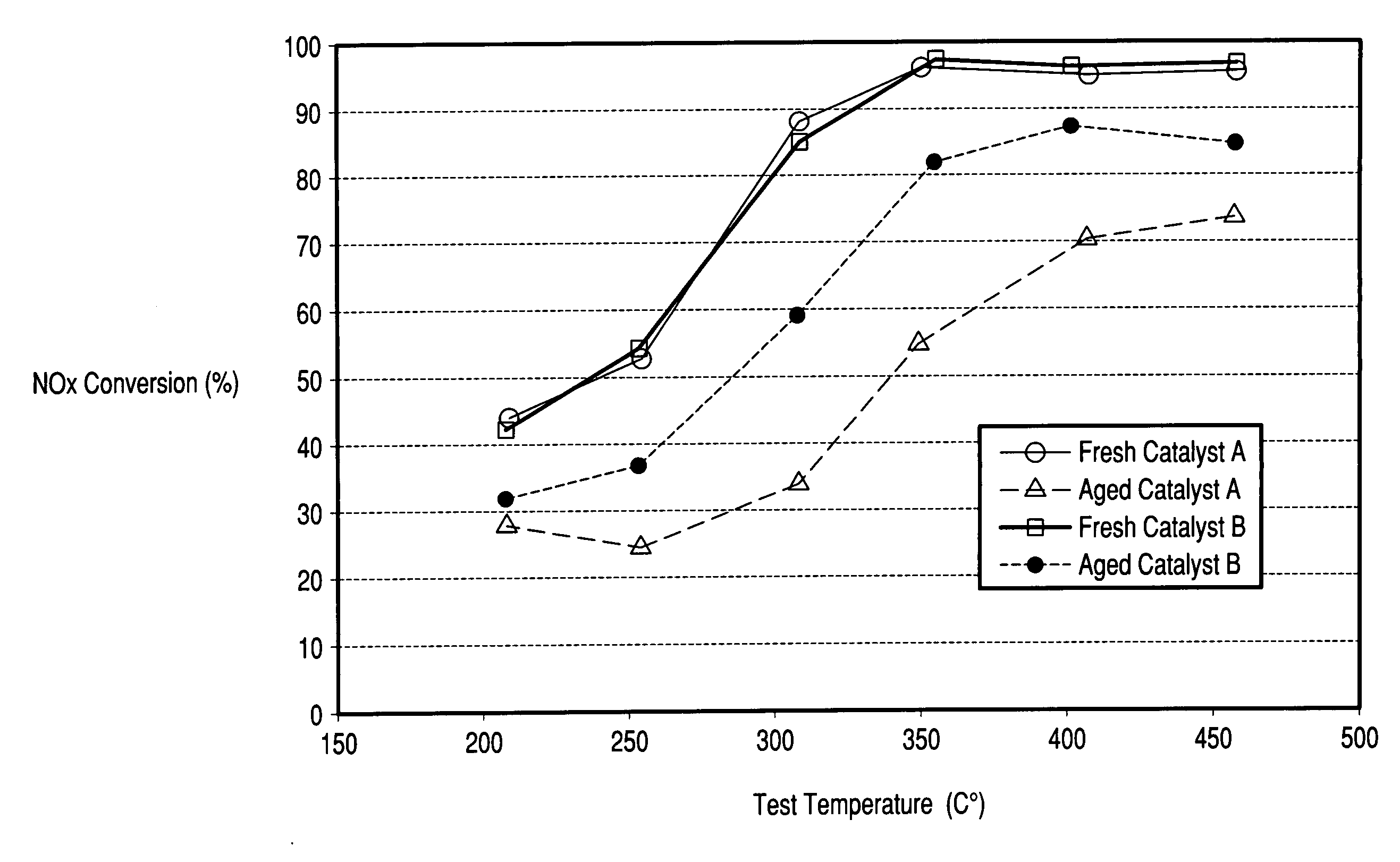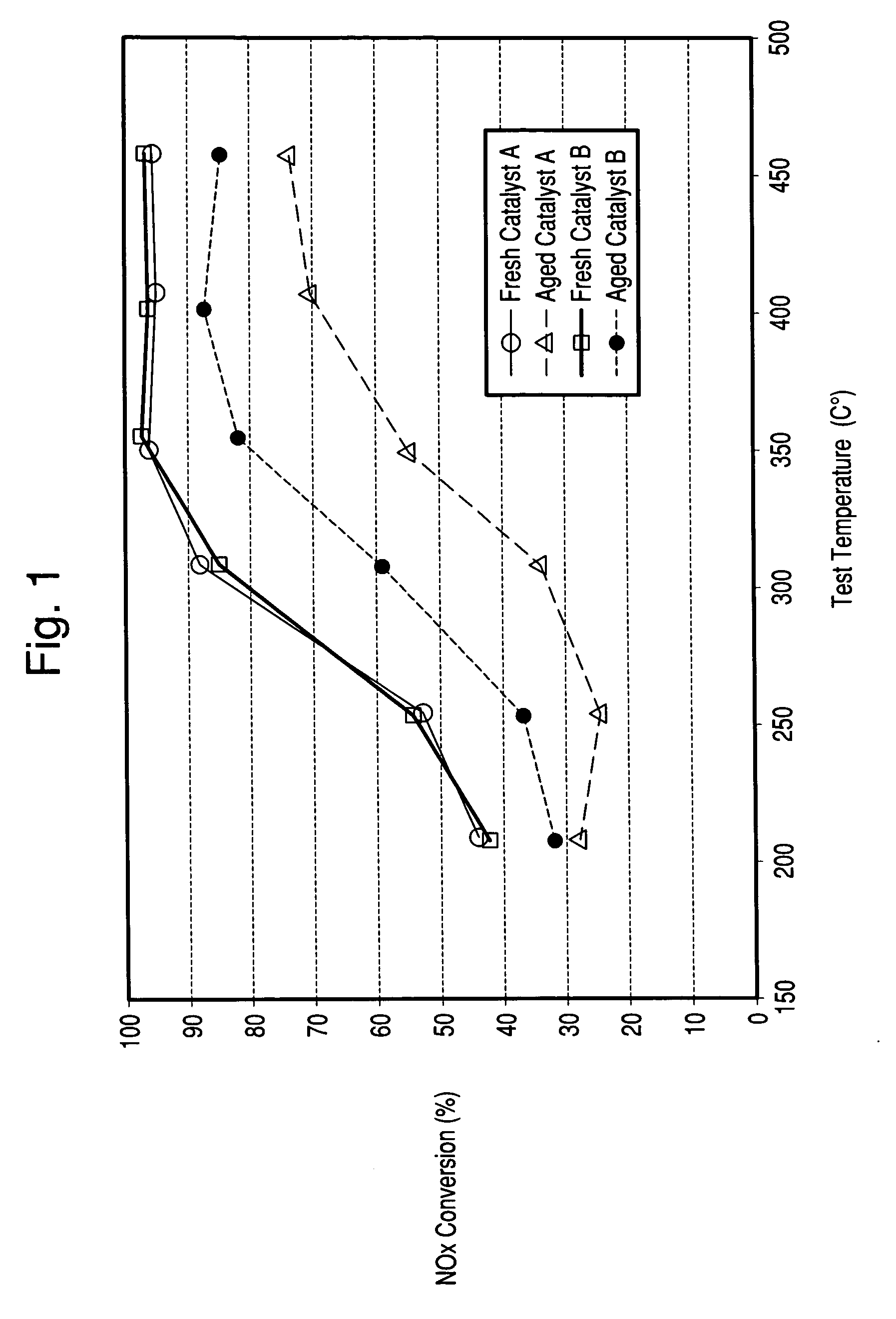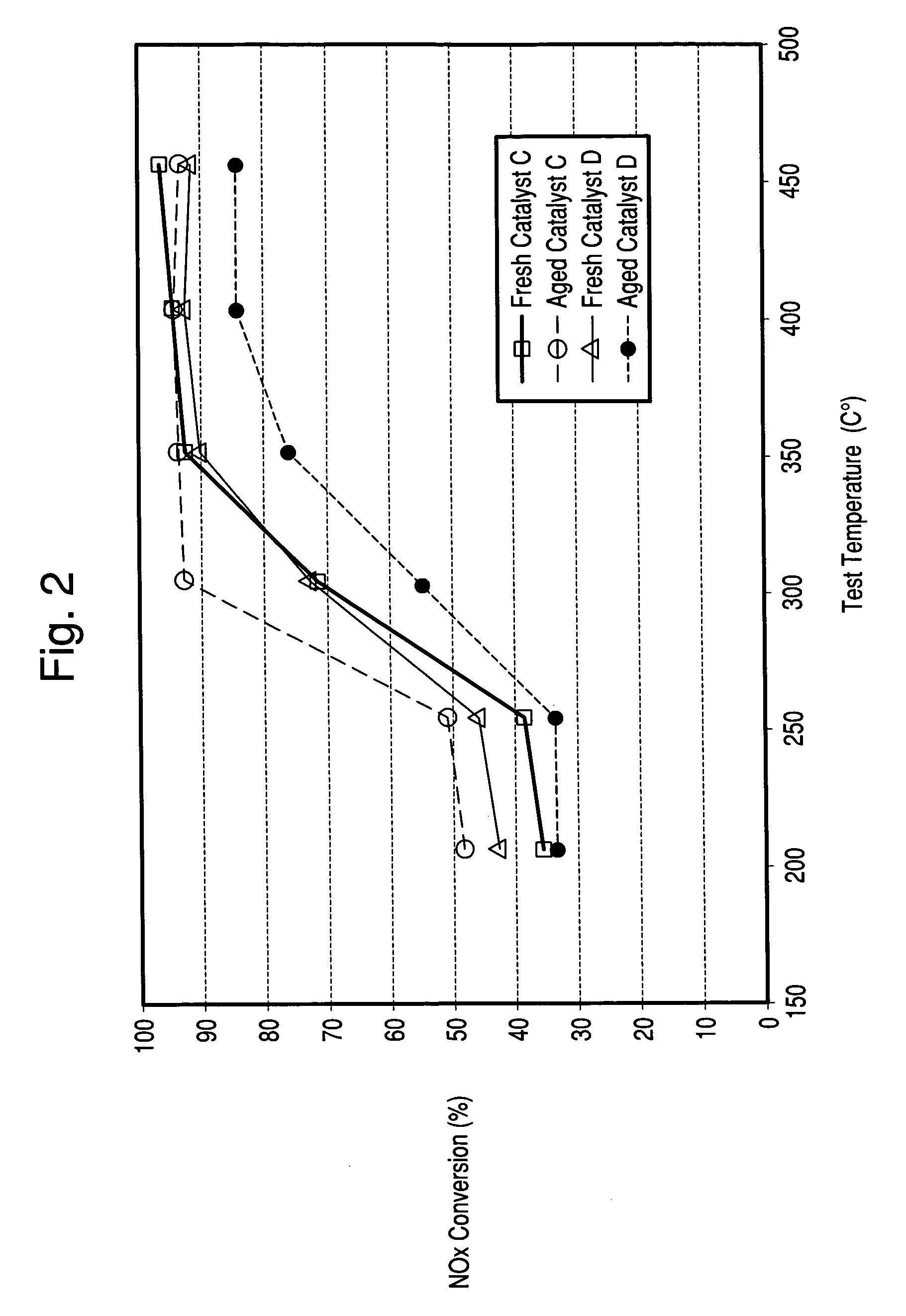Zeolite catalyst with improved NOx reduction in SCR
a technology of nox reduction and zeolite, which is applied in the direction of physical/chemical process catalysts, other chemical processes, separation processes, etc., can solve the problems of poor hydrothermal durability, less desired noble metal catalysts, and high silica materials that are more difficult to exchange with high levels of desired metals, etc., to achieve improved selective catalytic reduction of nox, good performance, and high activity
- Summary
- Abstract
- Description
- Claims
- Application Information
AI Technical Summary
Benefits of technology
Problems solved by technology
Method used
Image
Examples
example 1
[0041]Catalyst A. Synthesis of Copper Zeolite Y. An ammonium form of a low sodium Y (Na2O[0042]A. 507.3 g of zeolite Y was added to 2523.77 g of an aqueous solution of copper (II) sulfate pentahydrate containing 0.24% by weight Cu (0.04 M Cu), with stirring to suspend the solids and disperse the lumps in a 4 liter Pyrex beaker.[0043]B. With continued stirring, the slurry of Step A was heated to 80° C., for one hour, and then cooled. pH of the solution was not adjusted but was between 2.75 and 3.5 throughout the reaction.[0044]C. The cooled slurry of Step B was vacuum filtered to separate the solids from the liquid, and the solids were washed with a volume of deionized water equal to the volume of the separated liquid.[0045]D. The powder of Step C was dried for 4 hours at 90° C. in air to provide a copper promoted zeolite Y powder (CuY).[0046]E. The CuY of Step D was reslurried (with continuous stirring) in the same copper solution as Step A before Step B through D was carried out ag...
example 2
[0050]Catalyst B. Synthesis of Copper Zeolite Y. An ammonium form of a low sodium Y (Na2O[0051]A. 4.375 kg of zeolite Y was added to 33.5 kg of an aqueous solution of copper (II) sulfate pentahydrate containing 1% by weight Cu (0.16 M Cu), with stirring to suspend the solids and disperse the lumps in a 4 liter Pyrex beaker.[0052]B. With continued stirring, the slurry of Step A was heated to 80° C., for one hour, and then cooled. pH of the solution was not adjusted but was between 3 and 4 throughout the reaction.[0053]C. The cooled slurry of Step B was vacuum filtered to separate the solids from the liquid, and the solids were washed with a volume of deionized water equal to the volume of the separated liquid.[0054]D. The powder of Step C was dried for 4 hours at 90° C. in air to provide a copper promoted zeolite Y powder (CuY).[0055]E. The CuY of Step D was reslurried (with continuous stirring) in the same copper solution as Step A before Step B through D was carried out again for a...
example 3
[0059]The Copper zeolite catalysts of Examples 1 and 2 were used to coat honeycombs in an amount of about 2-2.5 g / in3. The catalysts were then tested for NH3 SCR reduction of NOx in a lab reactor. The feed gas contained 500 ppm NOx, added as NO; 500 ppm NH3; 5 vol % water and 10 vol % O2 in nitrogen. Space velocity as GHSV was 80,000 h−1. FIG. 1 indicates the importance of sodium content on the hydrothermal stability of a copper zeolite Y catalyst where low sodium levels resulted in improved NOx reduction efficiency after hydrothermal aging. Both fresh catalysts have similar copper loadings (˜4.8 wt % CuO) and similar extra-framework aluminum contents but, differ in sodium content.
PUM
| Property | Measurement | Unit |
|---|---|---|
| temperature | aaaaa | aaaaa |
| pore diameter | aaaaa | aaaaa |
| diameter | aaaaa | aaaaa |
Abstract
Description
Claims
Application Information
 Login to View More
Login to View More - R&D
- Intellectual Property
- Life Sciences
- Materials
- Tech Scout
- Unparalleled Data Quality
- Higher Quality Content
- 60% Fewer Hallucinations
Browse by: Latest US Patents, China's latest patents, Technical Efficacy Thesaurus, Application Domain, Technology Topic, Popular Technical Reports.
© 2025 PatSnap. All rights reserved.Legal|Privacy policy|Modern Slavery Act Transparency Statement|Sitemap|About US| Contact US: help@patsnap.com



